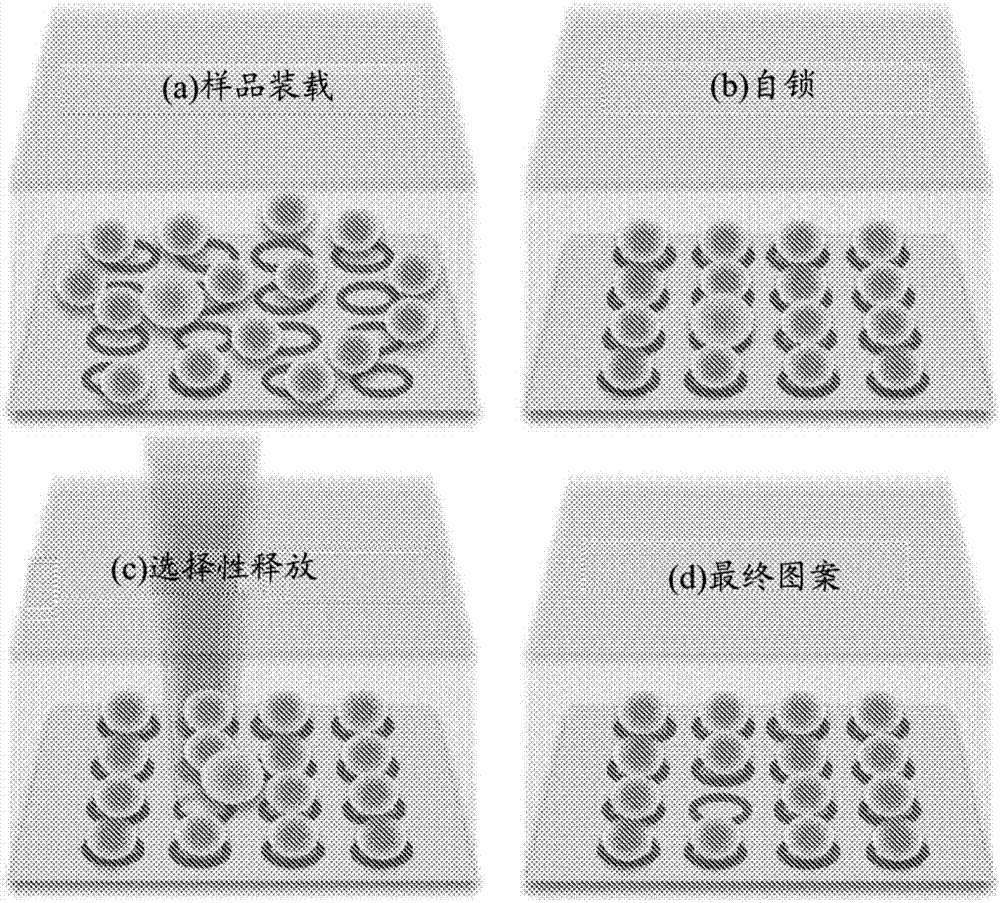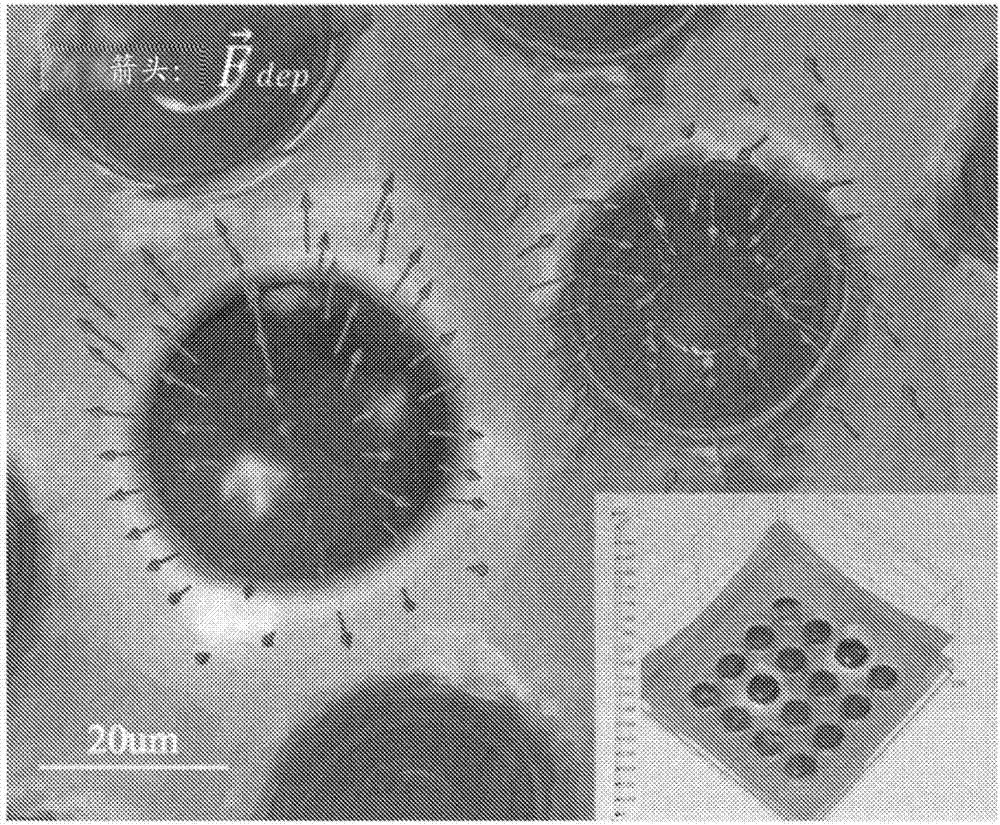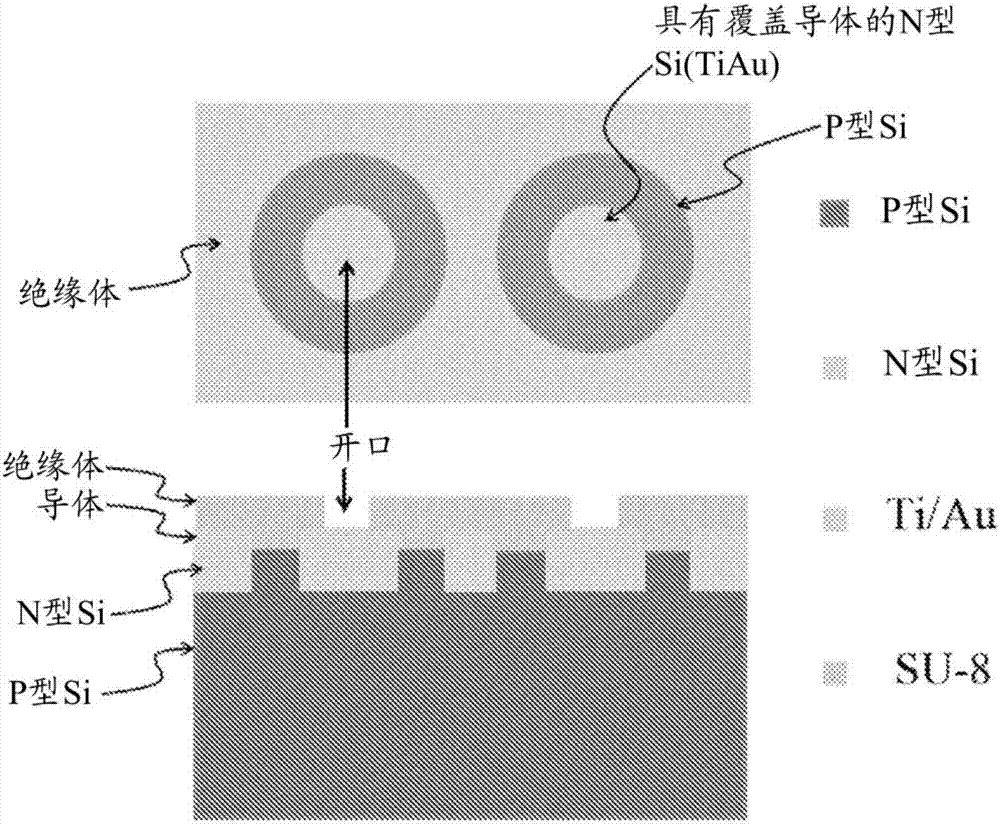Self-locking optoelectronic tweezer and its fabrication
A self-locking, optical tweezers technology, used in optics, dielectrophoresis, optical components, etc., can solve problems such as the inability to provide optical image clarity
- Summary
- Abstract
- Description
- Claims
- Application Information
AI Technical Summary
Problems solved by technology
Method used
Image
Examples
Embodiment approach 1
[0008] Embodiment 1: A self-locking photoelectric tweezers device, which includes: a first substrate, which includes a first electrode and a plurality of annular and / or non-circular phototransistors that can be optically turned on and off, wherein the The phototransistor and first substrate are configured to generate a negative dielectrophoretic (DEP) force at the annular or non-circular phototransistor when a voltage is applied to the device; a DEP at a ring-shaped or bean-shaped (eg, kidney bean-shaped) phototransistor; and a surface comprising a second electrode, wherein the surface is configured to define a chamber or channel between the first substrate and the surface , and the chamber or channel is configured to receive and, or hold, a fluid containing cells or particles.
Embodiment approach 2
[0009] Embodiment 2: The device of Embodiment 1, wherein the phototransistor is ring-shaped.
Embodiment approach 3
[0010] Embodiment 3: The device of Embodiment 1, wherein the non-circular phototransistor is bean-shaped (eg, kidney bean-shaped).
PUM
| Property | Measurement | Unit |
|---|---|---|
| Conductivity | aaaaa | aaaaa |
| Thickness | aaaaa | aaaaa |
Abstract
Description
Claims
Application Information
 Login to View More
Login to View More - R&D Engineer
- R&D Manager
- IP Professional
- Industry Leading Data Capabilities
- Powerful AI technology
- Patent DNA Extraction
Browse by: Latest US Patents, China's latest patents, Technical Efficacy Thesaurus, Application Domain, Technology Topic, Popular Technical Reports.
© 2024 PatSnap. All rights reserved.Legal|Privacy policy|Modern Slavery Act Transparency Statement|Sitemap|About US| Contact US: help@patsnap.com










